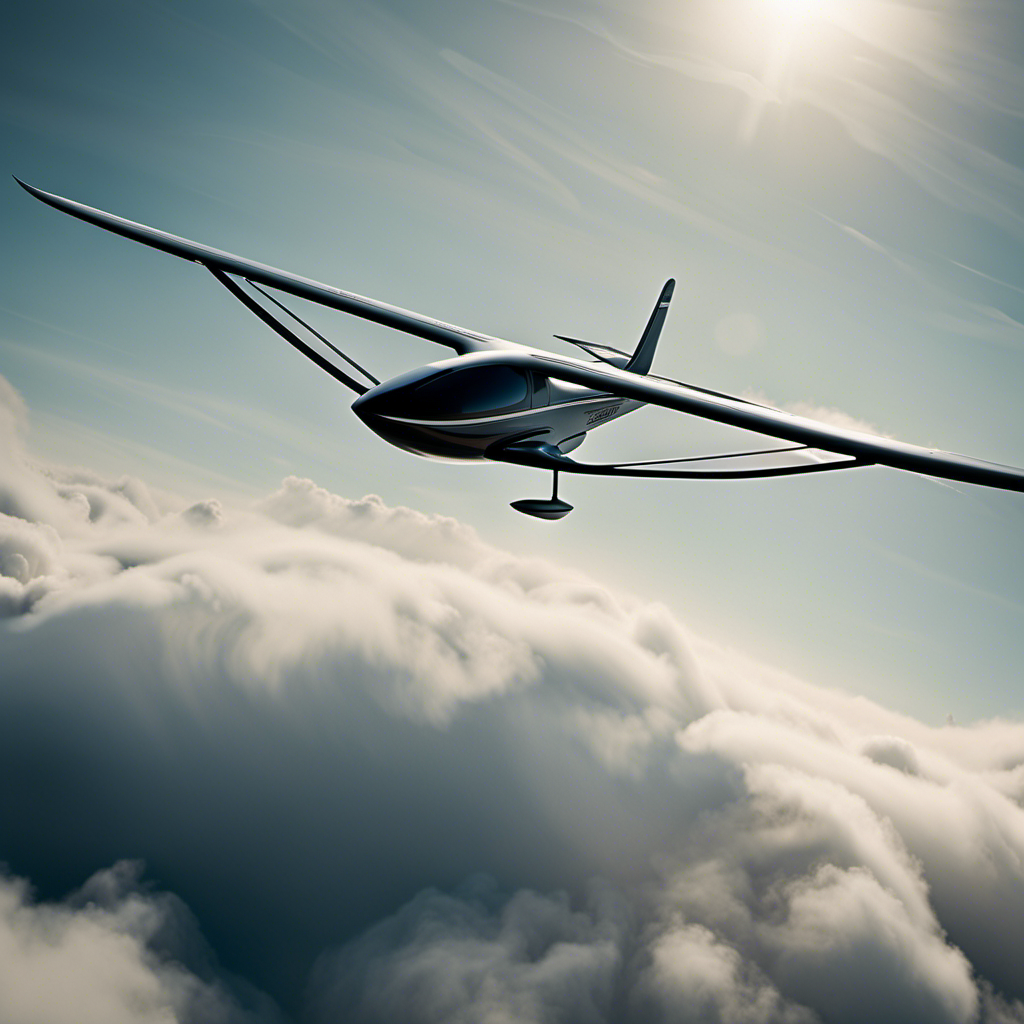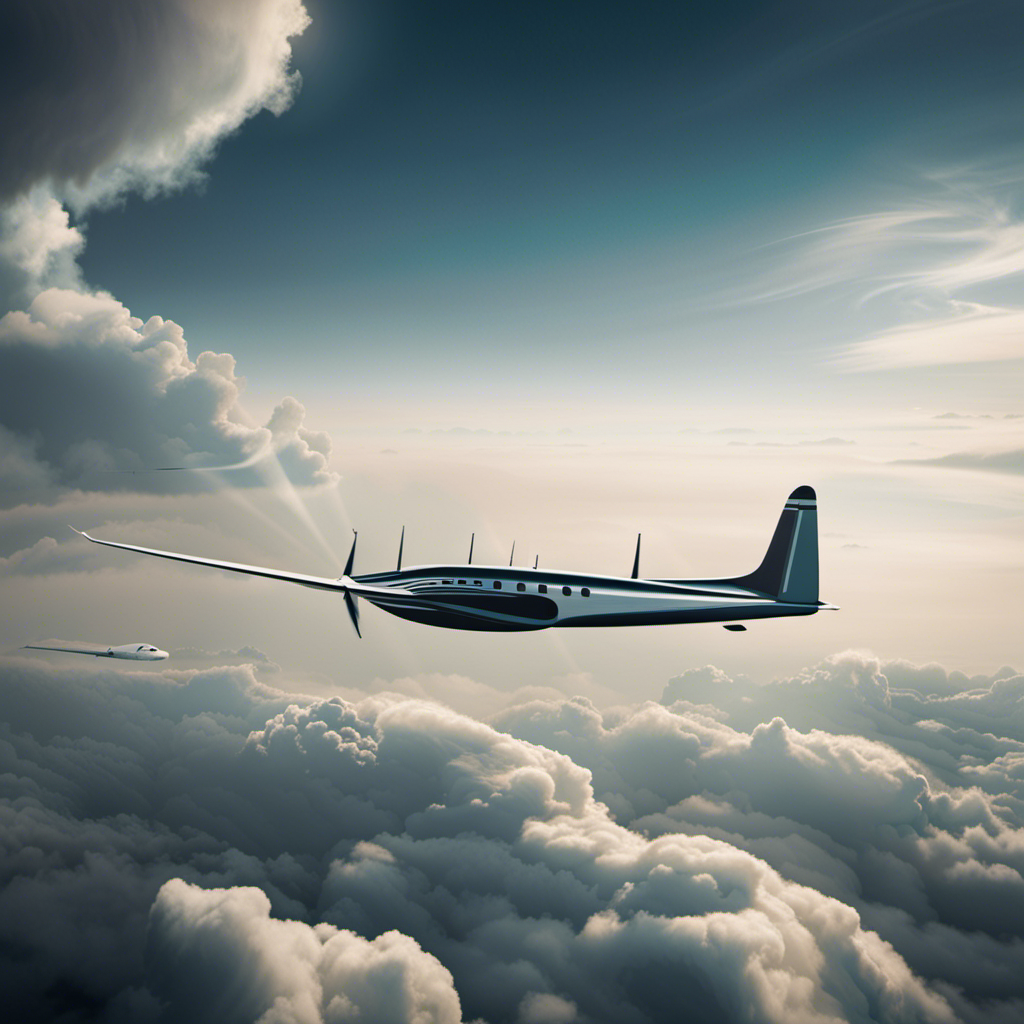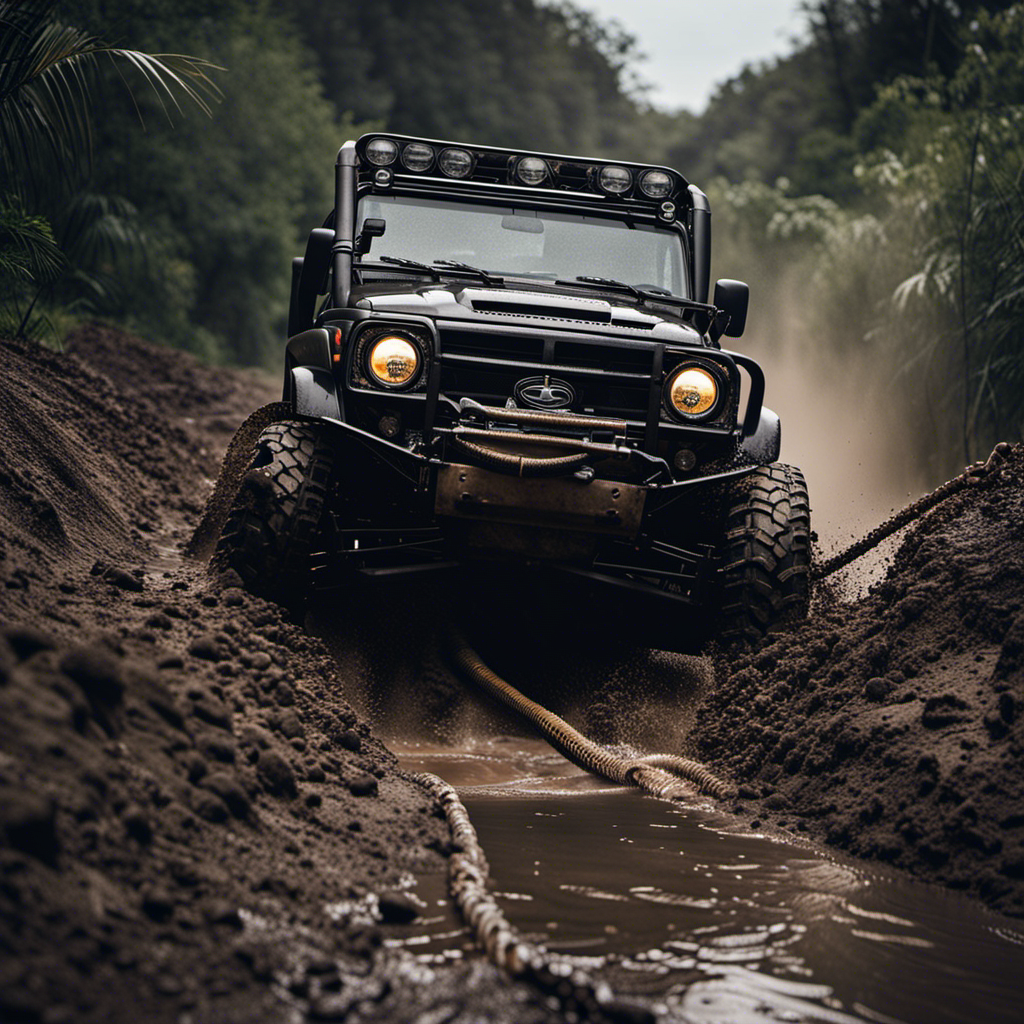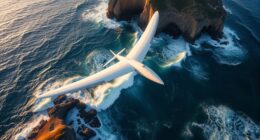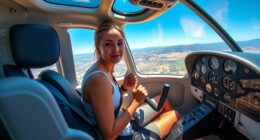Sure, you want to learn about how gliding works, correct? Let me break it down for you.
Gliding, my friend, is all about harnessing the power of aerodynamics. By manipulating lift and gravity, and with the right wing shape and design, we can soar through the skies with grace and precision.
It’s a skill that requires mastering the art of weight shifting and understanding the role of airspeed and angle of attack.
In this article, we’ll delve into the technicalities of gliding, explore safety procedures, and even take a look at the history and future of glider design.
So buckle up and get ready to glide like a pro!
Key Takeaways
- Gliding requires following trained safety procedures and staying calm during emergencies.
- Glider design has evolved with advancements in technology, materials, aerodynamics, and avionics.
- The future of gliding technology includes enhanced safety features, increased performance, and enhanced comfort.
- Gliding offers possibilities for exploration, adventure, and exciting developments to look forward to.
Understanding the Basics of Aerodynamics
To understand the basics of aerodynamics, you’ll need to grasp the concepts of lift and drag.
Aerodynamics principles and flight mechanics play a crucial role in how objects move through the air.
Lift is the force that opposes gravity and allows an object to stay airborne. It is generated by the difference in air pressure between the upper and lower surfaces of the object.
Drag, on the other hand, is the resistance that an object experiences as it moves through the air. It is caused by friction and air resistance.
These two forces, lift and drag, work together to determine the motion and stability of an object in flight.
Now, let’s explore the key forces at play: lift and gravity.
Lift and Gravity: The Key Forces at Play
Understanding how lift and gravity interact is crucial for successfully gliding. Lift is the force that counteracts gravity and allows an aircraft to stay airborne. It is generated by the shape and design of the wings, which create a pressure difference between the upper and lower surfaces. This pressure difference, combined with the angle of attack, creates lift.
On the other hand, gravity is the force that pulls the aircraft towards the ground. To maintain level flight or descend, the lift must equal or be greater than the force of gravity. By manipulating the shape and angle of attack of the wings, pilots can control the amount of lift and gravity acting on the aircraft.
Now, let’s explore how wing shape and design affect gliding.
How Wing Shape and Design Affect Gliding
The shape and design of the wings directly impact how well an aircraft glides. Wing efficiency and glide performance are crucial factors in achieving a successful glide. The wings of an aircraft are carefully designed to generate lift and reduce drag, allowing the aircraft to maintain altitude and glide through the air. Various wing shapes and designs are used to optimize these factors.
To illustrate the importance of wing shape and design, consider the following table:
| Wing Shape | Wing Design Features |
|---|---|
| Elliptical | Smooth lift distribution, low induced drag |
| Swept-back | Reduced drag at high speeds, improved stability |
| Delta | High maneuverability, low drag |
| Tapered | Reduced drag in spanwise direction |
| High aspect ratio | Increased lift-to-drag ratio, improved efficiency |
As we can see, different wing shapes and designs offer different advantages, depending on the specific requirements of the aircraft. Understanding the impact of wing shape and design on glide performance is essential in the field of aviation.
The role of airspeed and angle of attack will be explored in the next section, shedding light on additional factors influencing gliding performance.
The Role of Airspeed and Angle of Attack
Aircraft glide performance is significantly influenced by airspeed and angle of attack. Airspeed is of utmost importance when it comes to gliding. It directly affects the lift and drag forces acting on the aircraft. Maintaining the appropriate airspeed is crucial for achieving the desired glide ratio and maximizing the distance covered during the glide.
Additionally, the angle of attack plays a significant role in determining the glide performance. By adjusting the angle of attack, the pilot can control the lift generated by the wings and the overall aerodynamic efficiency of the aircraft.
Now, let’s delve into the next section, where we will explore how the glide can be controlled using various mechanisms such as flaps, spoilers, and ailerons.
Controlling the Glide: Flaps, Spoilers, and Ailerons
To control your glide, you can adjust the position of flaps, spoilers, and ailerons. These control surfaces play a vital role in maneuvering your glider during flight. Here’s how each of them contributes to the control of your glide:
-
Flaps and spoilers: By changing the position of the flaps and spoilers, you can alter the lift and drag characteristics of your glider. Flaps increase lift and allow for steeper descents, while spoilers reduce lift and enable quicker descents.
-
Ailerons: Ailerons are located on the wings and are responsible for controlling the roll of the glider. By moving the ailerons up or down, you can bank the glider left or right, allowing for turns and adjustments to your flight path. Additionally, ailerons also play a crucial role in yaw control, helping to counteract adverse yaw during turns.
Using Thermals and Updrafts for Sustained Flight
By understanding how to utilize thermals and updrafts, pilots can extend the duration of their glider flights.
Using thermal currents, which are columns of warm air rising from the ground, glider pilots can gain altitude without the need for an engine. When flying over areas with strong thermals, pilots can locate and circle within these rising columns, allowing them to gain height and stay airborne for longer periods of time.
Another technique used in sustained glider flight is ridge soaring. This involves flying along the edge of a hill or mountain where the wind is forced to rise, creating an updraft. By flying along the ridge and utilizing these updrafts, glider pilots can maintain altitude and continue their flight.
Mastering the skill of weight shifting is crucial for successful glider flight, allowing pilots to control the glider’s pitch and roll movements with precision. Transitioning to this next section, weight shifting is an essential skill that enables glider pilots to maintain stability and maneuverability during their flights.
Mastering the Skill of Weight Shifting
When flying a glider, you’ll need to master the skill of weight shifting in order to maintain stability and maneuverability throughout your flight. Proper weight distribution is crucial for controlling the glider’s pitch and roll. By shifting your body weight, you can adjust the center of gravity and control the glider’s movements.
For example, if you want to initiate a turn to the left, you can shift your weight slightly to the left side of the cockpit. This will cause the glider to bank and turn in that direction. Similarly, shifting your weight forward or backward can help control the glider’s speed and pitch attitude.
It is important to maintain a balanced and coordinated body positioning throughout the flight to ensure smooth and controlled movements. Mastering weight shifting is key to becoming a skilled glider pilot.
Next, we will explore gliding safety and emergency procedures.
Gliding Safety and Emergency Procedures
Remember, in case of an emergency during your gliding flight, it’s important to stay calm and follow the safety procedures you have been trained on. Gliding emergency procedures are designed to ensure your safety and minimize any potential risks.
One of the first safety precautions is to always have a thorough pre-flight inspection to identify any potential issues. During flight, it’s important to constantly monitor your altitude and airspeed, as well as staying aware of your surroundings.
If an emergency does occur, such as a loss of control or a sudden change in weather conditions, the key is to remain calm and follow the established procedures for your specific glider. These procedures may include actions such as maintaining a specific pitch attitude, using emergency equipment, or initiating a controlled landing.
By following these gliding safety precautions, you can increase your chances of safely navigating through any emergency situation.
Transitioning into the subsequent section about the history and evolution of glider design, it’s fascinating to explore how these safety procedures have evolved over time to ensure the well-being of glider pilots.
The History and Evolution of Glider Design
To better understand the history and evolution of glider design, let’s take a look at how advancements in technology have shaped the way gliders are built and flown.
Throughout the years, glider design has been influenced by the development of stronger and lighter materials, improved aerodynamics, and advanced avionics systems.
The history of glider competitions has also played a significant role in pushing the boundaries of glider design. Famous glider pilots like Lilienthal, who made groundbreaking contributions to gliding, and the Wright brothers, who applied their knowledge of gliding to powered flight, have greatly influenced the field.
These pioneers paved the way for modern glider design, which continues to evolve with advancements in technology.
As we explore the future of gliding technology, we can expect to see even more innovative designs and technologies that enhance the performance and safety of gliders.
Exploring the Future of Gliding Technology
As we look ahead, you’ll be amazed at the cutting-edge advancements in gliding technology that are on the horizon. The future of gliding holds exciting possibilities, thanks to innovative materials and breakthroughs in engineering.
Here are some reasons to be excited:
-
Enhanced Safety: New advancements will make gliders even safer, with improved cockpit designs and enhanced emergency systems. Pilots will have greater peace of mind as they soar through the skies.
-
Increased Performance: Future gliders will be faster and more efficient, thanks to advancements in aerodynamics and propulsion systems. These improvements will allow for longer flights and greater distances covered.
-
Enhanced Comfort: With the use of advanced materials, future gliders will offer increased comfort for pilots, reducing fatigue during long flights. This will enable pilots to fully immerse themselves in the joy of gliding.
With these future advancements in gliding technology, the possibilities for exploration and adventure are endless. Stay tuned for the exciting developments that lie ahead.
Frequently Asked Questions
What are the different types of gliders available?
There are several types of gliders available, each with its own design and gliding techniques. Some common types include sailplanes, hang gliders, and paragliders. They all rely on aerodynamic principles to achieve sustained flight without an engine.
Can gliders fly at night?
Nighttime gliding is possible with proper safety measures. Pilots must ensure they have adequate lighting, navigation equipment, and knowledge of the area. Flying at night requires extra caution due to reduced visibility.
How long can a glider stay in the air without any external assistance?
Without any external assistance, a glider can stay in the air for hours by utilizing various gliding techniques. It can reach maximum altitudes of over 50,000 feet, relying on thermals, ridge lift, and wave lift to sustain flight.
What are the common challenges faced by glider pilots?
Common challenges faced by glider pilots include adverse weather conditions, such as strong winds and turbulence, which can make flying difficult and unsafe. To mitigate these challenges, pilots must take strict safety precautions to ensure a safe and successful flight.
Are there any restrictions on where gliders can fly?
There are restrictions on where gliders can fly due to restricted airspace and weather limitations. These factors determine the areas where gliders can safely operate and must be considered before each flight.
Conclusion
In conclusion, gliding is a fascinating sport that relies on the principles of aerodynamics to achieve flight. By understanding the forces of lift and gravity, as well as the design of the glider’s wings, pilots can control their glide and maneuver in the air.
However, gliding also comes with risks, and it is important to prioritize safety and be prepared for emergencies. One hypothetical example that showcases the emotional aspect of gliding is imagining a pilot successfully navigating through turbulent weather conditions, demonstrating their skill and resilience in the face of adversity.
